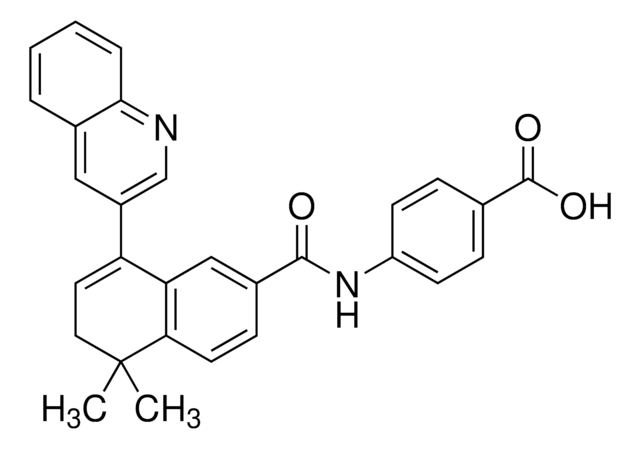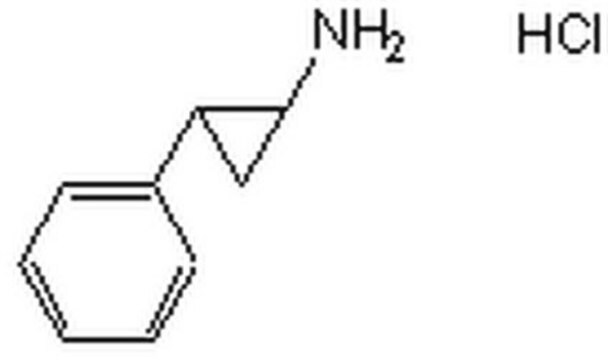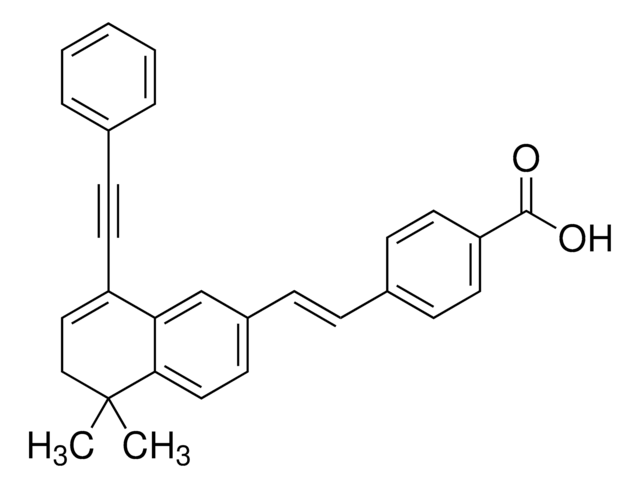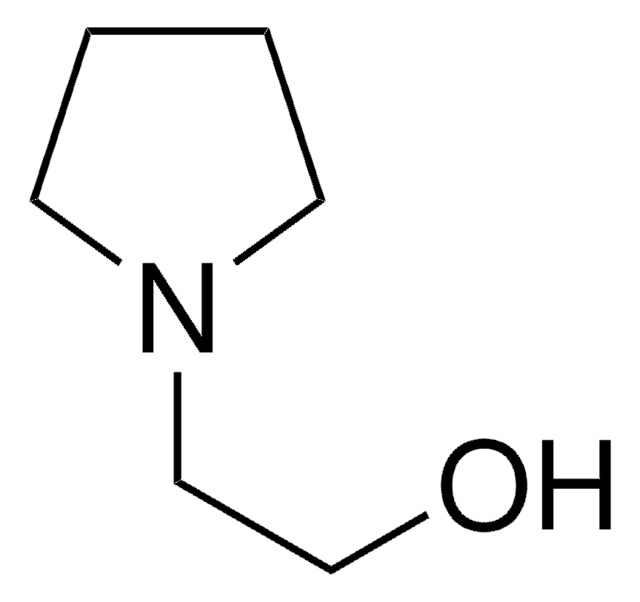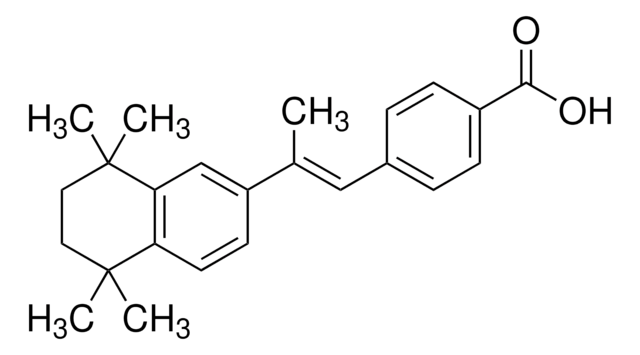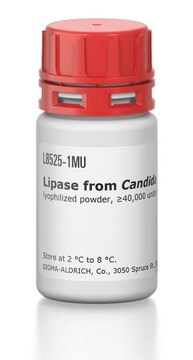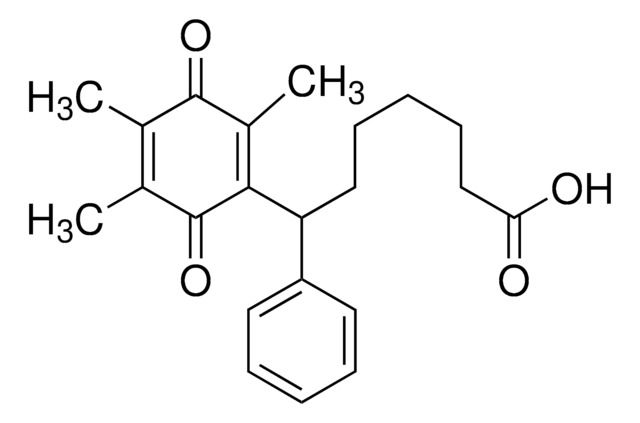SML0573
Ro 41-5253
≥98% (HPLC)
别名:
4-(2-(7-(Heptyloxy)-3,4-dihydro-4,4-dimethyl-2H-1-benzothiopyran-6-yl)-1-propenyl)-Benzoic acid, S,S-dioxide, 4-[(1E)-2-[7-(Heptyloxy)-3,4-dihydro-4,4-dimethyl-1,1-dioxido-2H-1-benzothiopyran-6-yl]-1-propen-1-yl]-benzoic acid, 4-[2-(7-Heptoxy-4,4-dimethyl-1,1-dioxo-2,3-dihydrothiochromen-6-yl)prop-1-enyl]benzoic acid, GR110, LG-629, RO 415253, Ro41-5253
登录查看公司和协议定价
所有图片(1)
About This Item
推荐产品
品質等級
化驗
≥98% (HPLC)
形狀
powder
顏色
white to beige
溶解度
DMSO: 20 mg/mL, clear
儲存溫度
−20°C
InChI
1S/C28H36O5S/c1-5-6-7-8-9-15-33-25-19-26-24(28(3,4)14-16-34(26,31)32)18-23(25)20(2)17-21-10-12-22(13-11-21)27(29)30/h10-13,17-19H,5-9,14-16H2,1-4H3,(H,29,30)/b20-17+
InChI 密鑰
JEIWQRITHXYGIF-LVZFUZTISA-N
應用
Ro 41-5253 has been used as a retinoic acid receptor-α (RAR-α) antagonist to study its effect on hepatitis B virus (HBV) infection.
生化/生理作用
Ro 41-5253 ( GR110) is a potent (IC50 = 16 nM) and selective retinoic acid receptor-α (RARα) antagonist, with some recently discovered activity as a PPARγ agonist at 50-fold higher concentrations (EC50 = 810 nM). Ro 41-5253 inhibited differentiation and prevented the loss of human HSCs that otherwise occurs in short-term culture.
Ro 41-5253 is a member of an interesting class of retinoids with anti-proliferative properties. It can repress the activity of retinoic acid receptor-α (RAR-α) in rat embryonic gonad culture. Ro 41-5253 can decrease the expression stimulated by the retinoic acid gene 8 (STRA8) gene. It can prevent multiplication and stimulate apoptosis in breast cancer cell lines.
特點和優勢
This compound is featured on the Nuclear Receptors (Non-Steroids) page of the Handbook of Receptor Classification and Signal Transduction. To browse other handbook pages, click here.
儲存類別代碼
11 - Combustible Solids
水污染物質分類(WGK)
WGK 3
閃點(°F)
Not applicable
閃點(°C)
Not applicable
Ingo Stuckmann et al.
Developmental biology, 255(2), 334-349 (2003-03-22)
We have established a heart slice primary culture, which allows us to mechanically separate distinct cardiac cell populations and assay their relative mitogenic and trophic effects on cardiac myocyte proliferation and survival. Using this system, we have found that a
N Bhattacharyya et al.
Molecular and cellular biology, 17(11), 6481-6490 (1997-10-29)
Transcription of the retinoic acid receptor beta2 (RARbeta2) gene is induced by retinoic acid (RA) in mouse P19 embryonal carcinoma (EC) cells. Here we studied RA-induced chromatin structure alterations in the endogenous RARbeta2 promoter and in an integrated, multicopy RARbeta2
E Koyama et al.
Developmental biology, 208(2), 375-391 (1999-04-07)
Retinoids have long been known to influence skeletogenesis but the specific roles played by these effectors and their nuclear receptors remain unclear. Thus, it is not known whether endogenous retinoids are present in developing skeletal elements, whether expression of the
Vanmathy R Kasimanickam et al.
Theriogenology, 79(1), 10-16 (2012-10-30)
Retinoic acid (RA) is an essential component for development and maintenance of the male genital tract and for spermatogenesis. Aldehyde dehydrogenase (ALDH)1, cytochrome P450 (CYP)26b1, RA receptor (RAR)α, cellular RA-binding protein (CRAB)II, and stimulated by RA gene (STRA)8 are involved
Amareshwar T K Singh et al.
British journal of haematology, 150(2), 158-169 (2010-05-29)
Mantle cell lymphoma (MCL) is characterized by translocation t(11;14)(q13;q32), aggressive clinical behaviour, and poor patient outcomes following conventional chemotherapy. New treatment approaches are needed that target novel biological pathways. All trans retinoic acid (ATRA) is a key retinoid that acts
我们的科学家团队拥有各种研究领域经验,包括生命科学、材料科学、化学合成、色谱、分析及许多其他领域.
联系技术服务部门